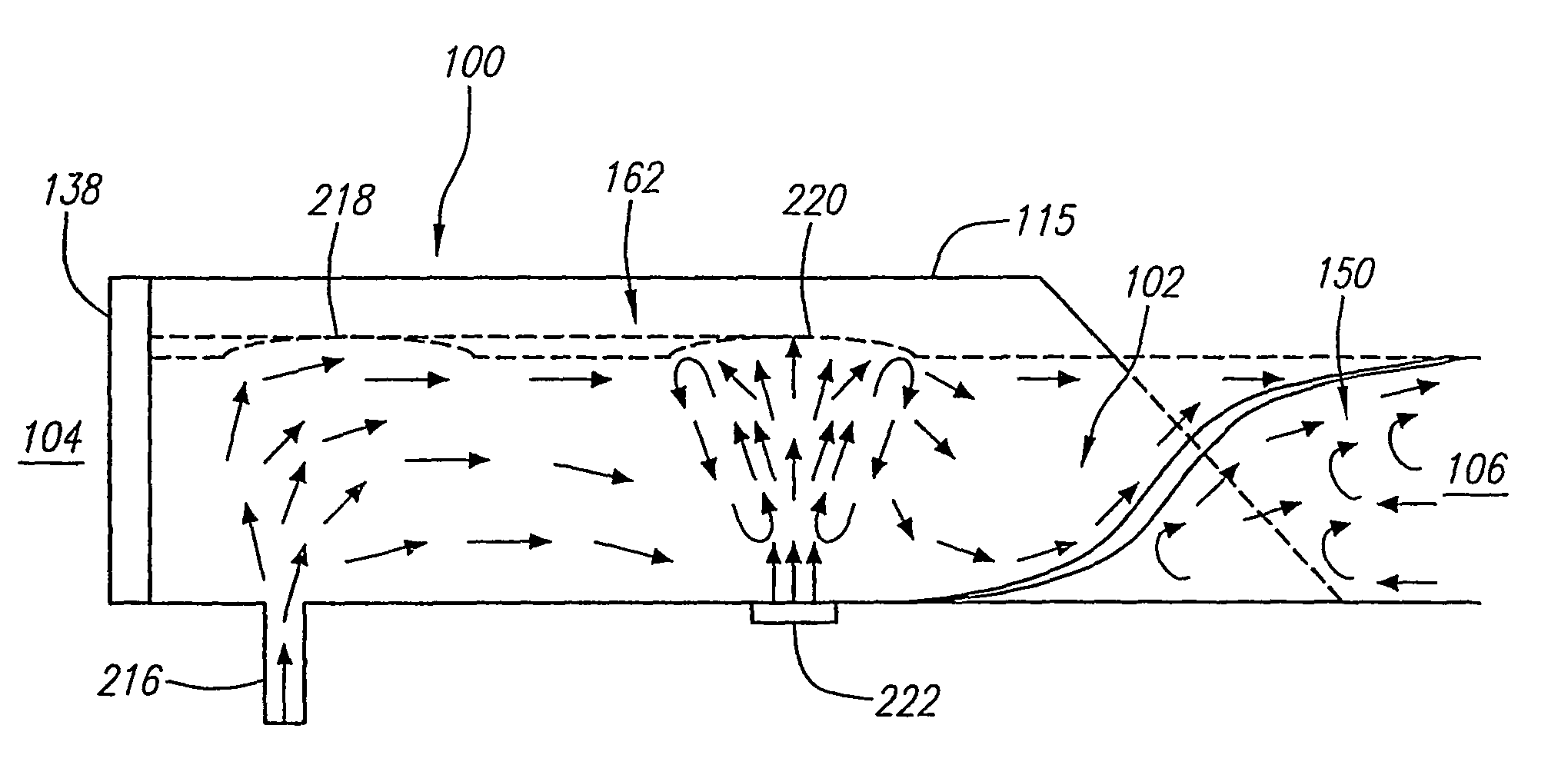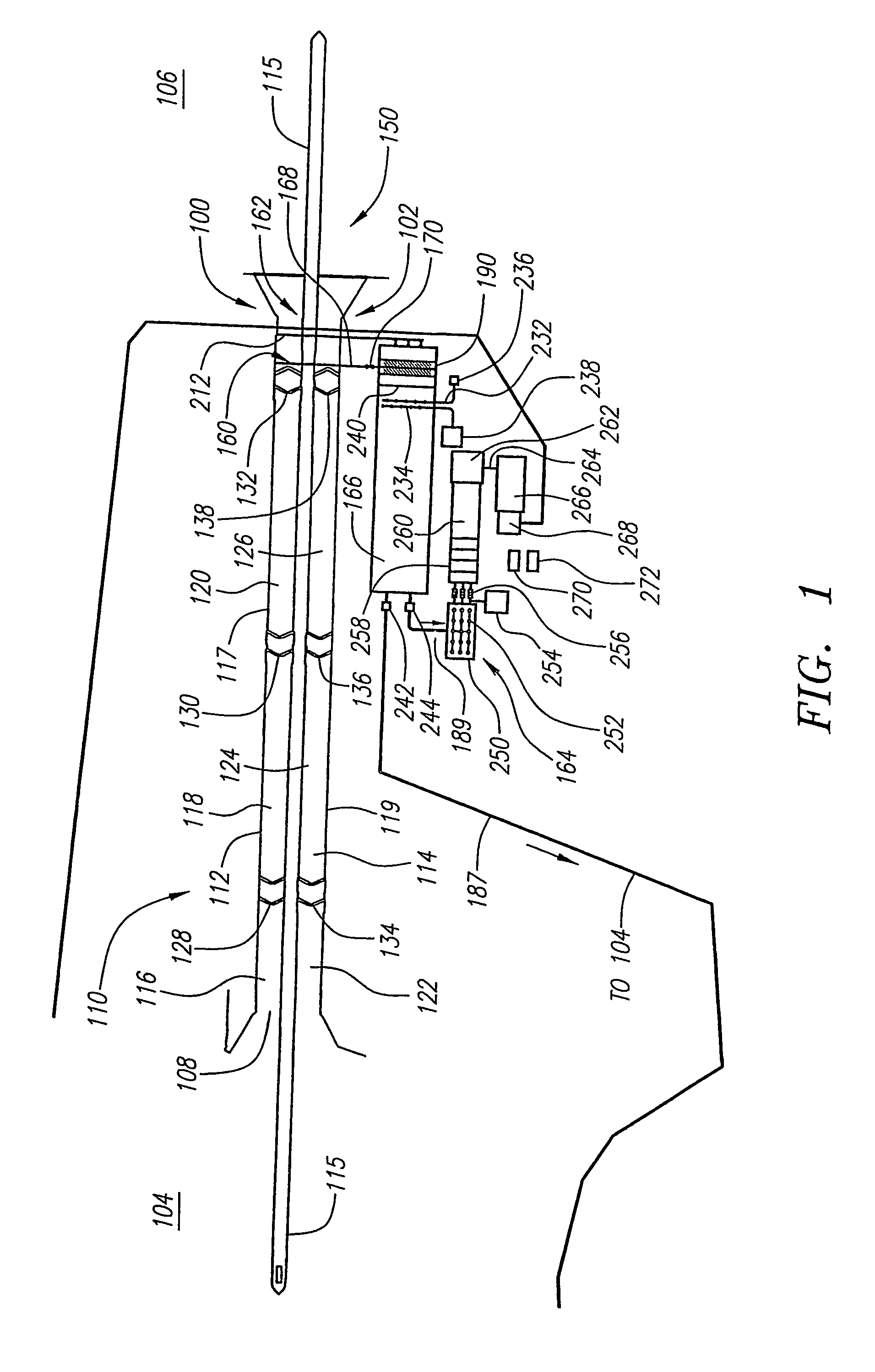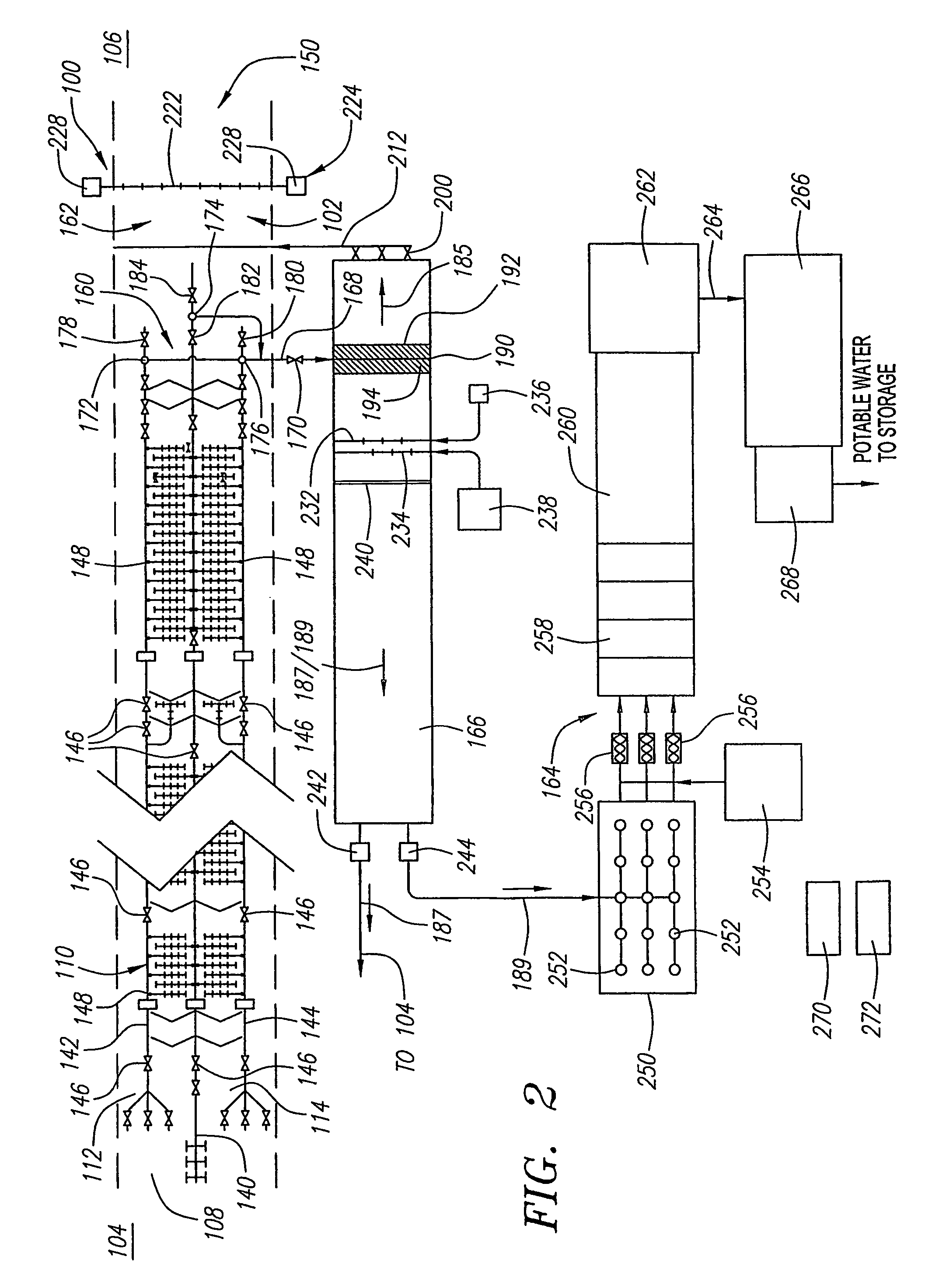Saltwater intrusion prevention system
a technology of saltwater intrusion and prevention system, which is applied in the direction of water cleaning, service pipe system, transportation and packaging, etc., can solve the problems of unseasonable low rainfall level over the next fifteen years, serious threat to the water quality deterioration of fresh water bodies, so as to increase the amount of fresh water available
- Summary
- Abstract
- Description
- Claims
- Application Information
AI Technical Summary
Benefits of technology
Problems solved by technology
Method used
Image
Examples
Embodiment Construction
[0031]The present invention is a saltwater intrusion prevention system 100 typically employed at an interface region 102 between a fresh water body 104 and a saltwater body 106 as shown in FIG. 1 to prevent saltwater from entering and causing the fresh water body 104 to become brackish. The saltwater intrusion prevention system 100 can be employed where the fresh water body 104 is a navigation canal or ship channel typically associated with canal locks, or a drainage channel interfacing with a saltwater body where canal locks are not present. The saltwater intrusion prevention system 100 is designed for: (a) increasing the amount of available fresh water in the fresh water body 104; (b) ensuring that the fresh water added to the fresh water body 104 meets minimum fresh water standards; (c) supporting the municipal requirements for fresh water usage including water craft transit, industrial and agriculture usage, and public use consumption; (d) protecting the fresh water environment ...
PUM
 Login to View More
Login to View More Abstract
Description
Claims
Application Information
 Login to View More
Login to View More - R&D
- Intellectual Property
- Life Sciences
- Materials
- Tech Scout
- Unparalleled Data Quality
- Higher Quality Content
- 60% Fewer Hallucinations
Browse by: Latest US Patents, China's latest patents, Technical Efficacy Thesaurus, Application Domain, Technology Topic, Popular Technical Reports.
© 2025 PatSnap. All rights reserved.Legal|Privacy policy|Modern Slavery Act Transparency Statement|Sitemap|About US| Contact US: help@patsnap.com



